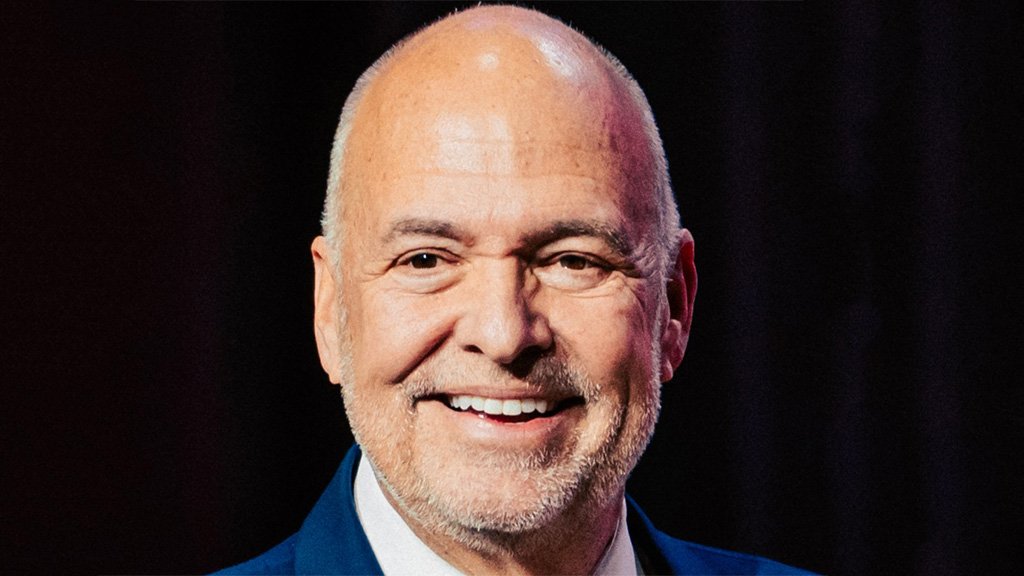Pantuso set for more leisurely ride as he debarks bus group
American Bus Association CEO since 1996 to retire in September; helped triple size of group, created representative councils.
- July 15, 2024 |
-
 WILLIAM EHART
WILLIAM EHART

As he looks back, soon-to-retire American Bus Association (ABA) CEO Peter Pantuso recalls the changing landscape of the bus industry and the association sector. Perhaps the years flash by like the scenery on one of his long-haul motorcycle rides, of which he plans to do more when he steps down in September.
It has been a long ride for Pantuso, 69, who has led the group since 1996 and has worked for three other associations, representing manufacturers in a wide range of industries, from glass to candy to rubber, starting as director of government affairs for the Glass Packaging Institute in 1980.
“While some of the functionality of associations is not much different, there was certainly a lot more focus back then on socializing, a lot less focus on education and training as there is today,” he told CEO Update.
“It’s much more businesslike. The professionalism in the association community is the biggest thing that’s changed.”
Membership triples
Pantuso brought such professionalism to ABA, which represents private and tour bus operators. Think of brands like Peter Pan, Trailways and Coach USA (which also owns Megabus), but also of much smaller companies.
“It’s hard to imagine anyone else leading ABA,” immediate past board Chair Gene Berardi, CEO of Adirondack Trailways, said in the statement announcing Pantuso’s departure. “The professionalism, expansion, creativity, and steadfast dedication that Pete brings to ABA and to the entire industry is second to none.” Adirondack Trailways is a member of the Trailways Transportation System.
ABA membership has tripled under Pantuso’s leadership — in part by bringing tour bus operators on board — and the association says its annual convention, ABA’s Marketplace, is “the leading domestic packaged travel event in the industry.”
The industry has evolved, too.
“Part of the pleasure (of my tenure) has been to be able to see how the industry has changed and adapted to what the customer wants,” Pantuso said.
“The industry over the years is very, very different, much more professional, much more business- and customer-focused,” he said. “Today you can get buses with very different levels of service from any given destination, especially from city to city.”
Washington, D.C., for example, only had two bus companies making trips to New York in the 1990s, Pantuso said. “Now you have at least 10 other bus companies that are operating, and not just from Washington, but from the suburbs. . . . And then you’ve got a company in D.C. called The Jet that runs this very high-end service with motion cancelling seats and an attendant.”
Representative councils
Pantuso hasn’t just helped boost ABA’s membership ranks. He also created councils to increase representation of various segments of the industry (such as companies that specialize in transporting celebrities), to include various types of busing executives, and to advance priorities like improved safety and repairs.
The new councils include the African American Motorcoach Council, the Women in Buses Council, the Hispanic Motorcoach Council, the Entertainer Motorcoach Council and the Next Era Leadership Council for younger executives.
Pantuso said nearly all the private bus companies in the United States are family owned, which means succession is a major issue, as spouses and children take over businesses they may not know as well as the departing leaders.
“The councils have really taken off over the last few years,” he said. “Just by saying, Well, we’ve already got these members, but they’re not alike. And so, where it makes sense, should we look at forming a council to get like-minded people a chance to talk to one another? It gives them opportunities to network and interact and it creates a stronger bond to the organization.”
In addition, members and potential members from other countries may have different notions of what an association is all about.
“Our Hispanic members tell us that there are a lot of people in the business who may have come from other countries who felt uncomfortable being a part of an association because they looked at the association almost as a government entity,” he said.
Another innovation is a program in which ABA communications staff — or possibly Pantuso himself — can help bus companies respond to journalists when accidents occur involving their buses.
“If there is an accident, whether you’re a member or not, you can reach out to us 24/7 and we will help you with the media side. We’ll help you draft statements if you want that. If you want us to be your media spokesperson, where you direct all media to us, we’ll take care of that for you,” Pantuso said. “Our members are in the business of running buses, not responding to the media.”
Better exit strategy
Pantuso will join a wholesale tour company, Liberty Receptive Tours, as a partner when he retires. He also is looking forward to more time on his farm in Warrenton, Va., more interstate motorcycle trips on his cruising bike (a Honda VTX 1300) and playing the harmonica more often during blues jam sessions at musical venues, or sitting in with a band, as he has often done.
The outgoing CEO recalls that his predecessor, George Snyder, died of a heart attack in 1995 at an industry trade show (not an ABA show). Not only did Snyder die at a relatively young age — The Washington Post reported he was 55 — but his death left ABA leaderless for nine months before Pantuso was hired.
Pantuso wants to enjoy retirement and wanted to leave ABA with a creditable succession process. (Recruitment firm Heidrick & Struggles is assisting in the search for ABA’s next CEO.)
“This transition to a new a new leader will hopefully be a lot smoother than the last one,” he said.
